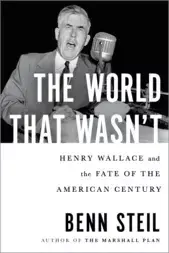Politics and Government
Political History and Theory
-
A Review of The World’s Worst Bet: How the Globalization Gamble Went Wrong by David J. LynchThe book argues that the United States erred in embracing globalization. But many other policy decisions contributed to America’s current economic predicament—and raising trade barriers may prove as misguided as the mistakes it claims to correct.
-
Ten Anniversaries to Note in 2026As 2025 comes to a close, here are ten notable historical anniversaries to mark in 2026.
-
Zbigniew Brzezinski, With Edward LuceEdward Luce, U.S. national editor and a columnist for the Financial Times, sits down with James M. Lindsay to discuss what we can learn from the life, career, and writings of Zbigniew Brzezinski, national security advisor to President Jimmy Carter.
Experts in this Topic
-
Remembering Those Whom Memorial Day HonorsThe story of an American hero who made the ultimate sacrifice for the United States.
-
Reflecting on Post-Soviet Russia and America TodayPanelists compare 1990s Russia and the first decade of the 21st century with the U.S. political landscape today in a complex and changing world order. For those attending virtually, log-in information and instructions on how to participate during the question and answer portion will be provided the evening before the event to those who register. Please note the audio, video, and transcript of this meeting will be posted on the CFR website. This meeting is part of the Diamonstein-Spielvogel Project on the Future of Democracy.
-
U.S.-China RelationsThe United States and China have one of the world’s most important and complex bilateral relationships. Since 1949, the countries have experienced periods of both tension and cooperation over issues including trade, climate change, and Taiwan.
-
TWE Celebrates Presidents’ DayThe forty-seven presidents of the United States have some interesting stories to tell.
-
Ronald Reagan on U.S. Global Leadership, with Max BootMax Boot, the Jeane J. Kirkpatrick senior fellow for national security studies at CFR and a columnist for The Washington Post, sits down with James M. Lindsay to discuss Ronald Reagan’s life and his impact on U.S. foreign policy.
-
Who Needs an Emir?The ongoing Emirship tussle in Nigeria begs broader questions about the place of traditional rulership in Africa’s emerging democracies.
-
The OBJ of IlliberalismNigerian statesman Olusegun Obasanjo’s rejection of liberal democracy is heartfelt—and wrong.
-
The President’s Inbox Recap: Henry Wallace and the Origins of the Cold WarThe post-World War II era would have looked very different had Henry Wallace become president.
-
Henry Wallace and the Origins of the Cold War, With Benn SteilBenn Steil, a senior fellow and director of international economics at CFR, sits down with James M. Lindsay to discuss how Henry Wallace might have changed history had he and not Harry Truman succeeded Franklin D. Roosevelt as president.
-
Totalism and State-Society Relations in ChinaThe distinction between totalitarianism and totalism offers valuable insights for China studies and the making of U.S. China policy.
-
The World That Wasn’t
![]() A dramatic and powerful new perspective on the political career of Henry Wallace—a perspective that will forever change how we view the making of U.S. and Soviet foreign policy at the dawn of the Cold War.
A dramatic and powerful new perspective on the political career of Henry Wallace—a perspective that will forever change how we view the making of U.S. and Soviet foreign policy at the dawn of the Cold War. -
The President’s Inbox Recap: China’s Underground HistoriansChinese filmmakers, journalists, and artists are challenging the Chinese Communist Party’s version of history.



